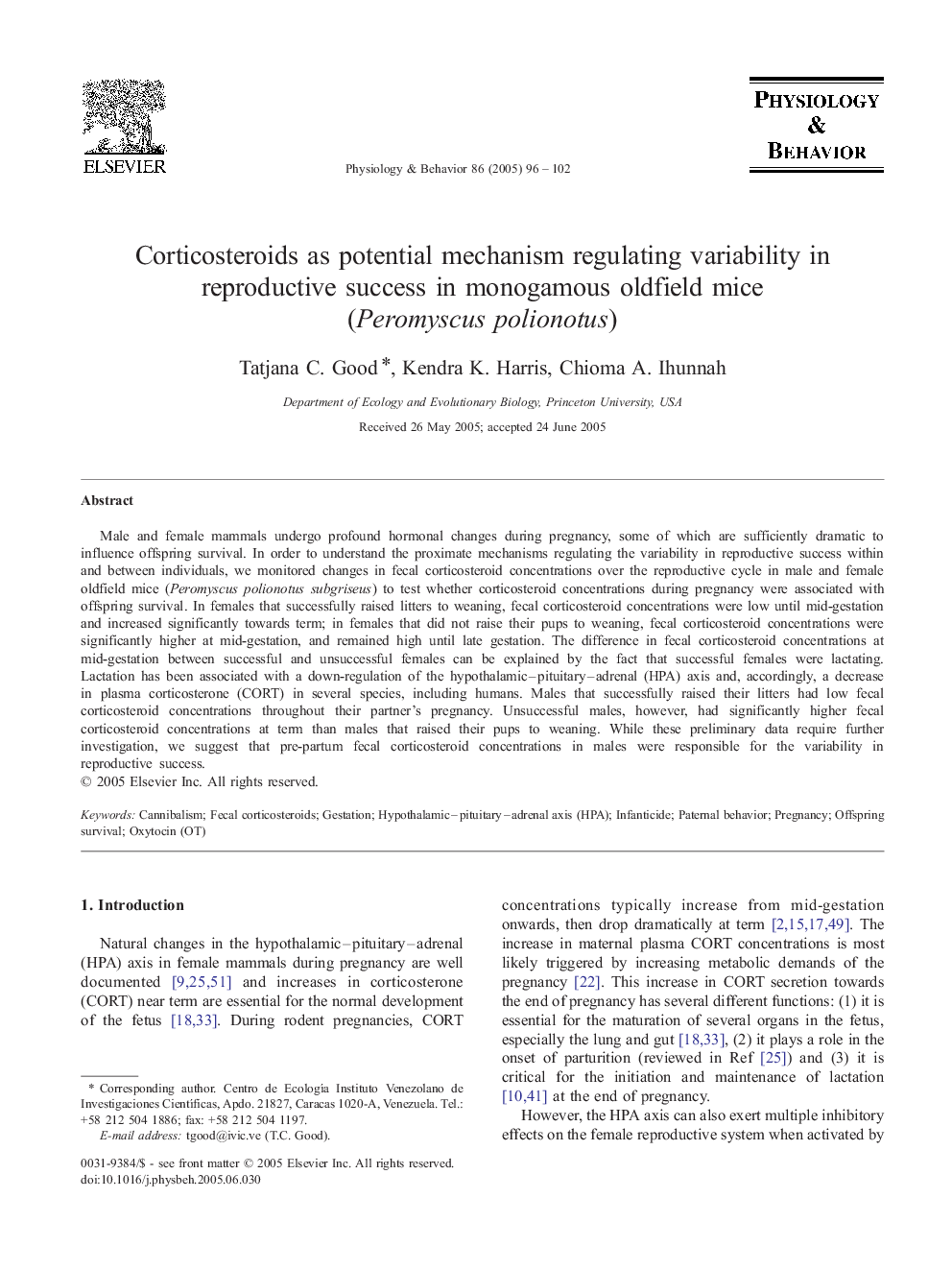| Article ID | Journal | Published Year | Pages | File Type |
|---|---|---|---|---|
| 9150036 | Physiology & Behavior | 2005 | 7 Pages |
Abstract
Male and female mammals undergo profound hormonal changes during pregnancy, some of which are sufficiently dramatic to influence offspring survival. In order to understand the proximate mechanisms regulating the variability in reproductive success within and between individuals, we monitored changes in fecal corticosteroid concentrations over the reproductive cycle in male and female oldfield mice (Peromyscus polionotus subgriseus) to test whether corticosteroid concentrations during pregnancy were associated with offspring survival. In females that successfully raised litters to weaning, fecal corticosteroid concentrations were low until mid-gestation and increased significantly towards term; in females that did not raise their pups to weaning, fecal corticosteroid concentrations were significantly higher at mid-gestation, and remained high until late gestation. The difference in fecal corticosteroid concentrations at mid-gestation between successful and unsuccessful females can be explained by the fact that successful females were lactating. Lactation has been associated with a down-regulation of the hypothalamic-pituitary-adrenal (HPA) axis and, accordingly, a decrease in plasma corticosterone (CORT) in several species, including humans. Males that successfully raised their litters had low fecal corticosteroid concentrations throughout their partner's pregnancy. Unsuccessful males, however, had significantly higher fecal corticosteroid concentrations at term than males that raised their pups to weaning. While these preliminary data require further investigation, we suggest that pre-partum fecal corticosteroid concentrations in males were responsible for the variability in reproductive success.
Related Topics
Life Sciences
Biochemistry, Genetics and Molecular Biology
Physiology
Authors
Tatjana C. Good, Kendra K. Harris, Chioma A. Ihunnah,
